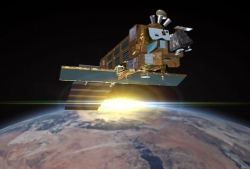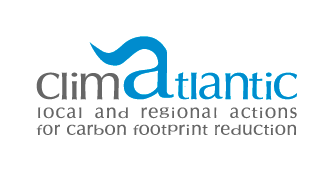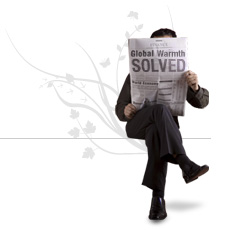NEWS & EVENTS : GENERAL INFORMATION

Business, citizens and environment to benefit from free access to EU satellite data
11.13.2013
The European Commission will provide free, full and open access to a wealth of important environmental data gathered by Copernicus, Europe's Earth observation system.
climatlantic //
The new open data dissemination regime, which will come into effect next month, will support the vital task of monitoring the environment and will also help Europe's enterprises, creating new jobs and business opportunities. Sectors positively stimulated by Copernicus are likely to be services for environmental data production and dissemination, as well as space manufacturing. Indirectly, a variety of other economic segments will see the advantages of accurate earth observation, such as transport, oil and gas, insurance and agriculture. Studies show that Copernicus – which includes six dedicated satellite missions, the so-called Sentinels, to be launched between 2014 and 2021 – could generate a financial benefit of some € 30 billion and create around 50.000 jobs by 2030. Moreover, the new open data dissemination regime will help citizens, businesses, researchers and policy makers to integrate an environmental dimension into all their activities and decision making procedures.
European Commission Vice President Antonio Tajani, Commissioner for Industry and Entrepreneurship, said: "This open data strategy is essential in unleashing the full potential of the Copernicus programme and developing the Earth observation markets. Its services will deliver information to a chain of information re-processors and end-users on a sustained basis. The 'Copernicus economy' will grow by attracting investment in the innovative applications market which is striving to meet increasing user demands for new services. Copernicus services are already essential to monitor the areas hit by natural catastrophes. A few days ago, Copernicus offered to the civil protection images of the most damage areas hit by the Typhoon Haiyan in the Philippines, contributing to organise rescues”.
The European Commissioner for the Environment, Janez PotoĨnik said: "Copernicus is an essential part of the shared environmental information infrastructure that will significantly contribute to better implementation of environmental policies, one priority of the 7th Environmental Action Programme. Environmental policy making depends on up-to date, accurate and comparable data on the current and future state of the Earth. Free, full and open access to Copernicus earth observation data represents a key contribution to good environmental governance in Europe.”
Benefits for citizens' security, agriculture, aquaculture and businesses
In a world facing an increased risk of natural and other disasters Copernicus aims to gather observations and implement information services that will monitor the state of the environment on land, at sea and in the atmosphere and will also improve citizens' security. Copernicus will provide consistent data across borders, making it easy to evaluate change and the impact of environmental policies. As an example, Copernicus data and information will allow us to monitor the following elements of the atmosphere:
• greenhouse gases that influence climate change,
• reactive gases that influence the quality of the air we breathe,
• the ozone layer and levels of solar UV radiation reaching the ground, and
• aerosols that affect temperature and air quality.
Although some environmental observational data are already available – mainly through R&D satellite missions and in situ sensors on the ground, at sea and in the air - the monitoring system will become more complete and operational when the Sentinel missions are in place, with the first Sentinel scheduled for launch in spring of 2014. Sentinel-1 will circle the Earth in Low Earth Orbit (at an altitude of around 700 km) and will be the only truly operational imaging radar satellite of this kind in the world. Subsequent Sentinel satellites will be launched in a rolling programme until 2021, each one providing different types of observations to serve the needs of the various Copernicus information services and the wide variety of interested data users.
To make maximum use of this wealth of information, researchers, citizens and businesses will be able to access Copernicus data and information through dedicated Internet-based portals. This free access will support the development of useful applications for a number of different industry segments (e.g. agriculture, insurance, transport, and energy). Other examples include precision agriculture or the use of data for risk modelling in the insurance industry. It will fulfil a crucial role, meeting societal, political and economic needs for the sustainable delivery of accurate environmental data.
The international dimension
The Copernicus open dissemination regime also has an international dimension. It is important that a programme, which may be used, for example, to provide information about a possible future food shortage in certain regions of our planet, can share this information with the public authorities in charge of the population concerned. Sharing this kind of information is an important aspect of Europe’s ‘soft power’ activities. Likewise, sharing information on climate change is a contribution to a debate engaging the future of many nations and should be done on a free and worldwide basis without discrimination.
A balanced approach between openness and the protection of specific interests
The Regulation that will be published in the Official Journal by mid-November, foresees a set of criteria that will address the protection of the Union and its Member States’ security interests. With that protection in place, the Copernicus open dissemination regime can deliver its full benefit to the downstream industry and users. The Commission will closely monitor the effects of the open dissemination regime and will adjust it if necessary.
More information on the Copernicus web site at: http://copernicus.eu








